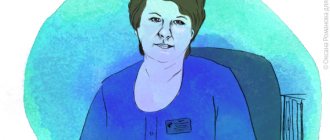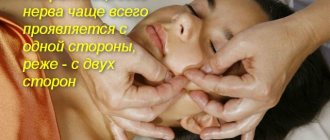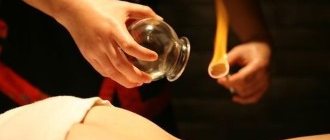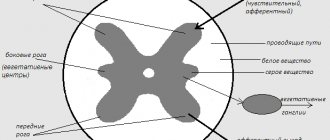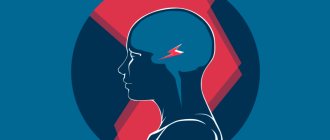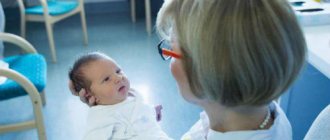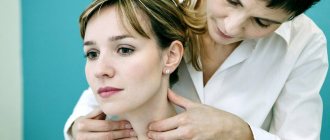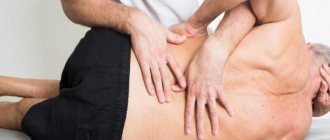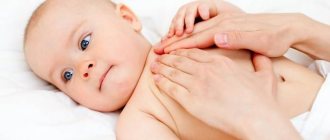Cerebral palsy (cerebral palsy) is a collective concept that generally combines under its name a list of forms and manifestations of central nervous system lesions that are similar in their etiology and symptoms. Most forms are characterized by muscle spasticity, although there are forms in which there is no spasticity, but there are cerebellar symptoms. The name of the forms is associated with the localization of spasticity and the depth of damage to the central nervous system from paresis, partial loss of innervation, to paralysis or plegia, complete loss of muscle function. In the first place, the cause of this disease is birth trauma, which can result in rupture of brain vessels or prolonged hypoxia due to blockage, compression of blood vessels; lack of oxygen for a long time is very dangerous for the brain. Also common causes: herpes, genetic disorders, cytomegalovirus, intoxication, past diseases of the pregnant woman.
The role of massage in the treatment of cerebral palsy in children.
Massage for children with cerebral palsy is always prescribed, but in the treatment process it still plays one of the main roles, not the main one. What is most important in the treatment of cerebral palsy cannot be said unequivocally, I would highlight the most important: drug treatment, exercise therapy (in all its diversity), massage, and in the late recovery period, orthopedic devices such as corsets, splints, verticalizers. The role of massage is great in conjunction with the above effective methods of treatment, and small when used alone. You have to act without massage if it turns out to be contraindicated, this happens when epilepsy or convulsions accompany the main diagnosis.
Contraindications
Massage is not performed if:
- acute form of allergy;
- acute heart failure;
- fungal skin lesions;
- infectious diseases;
- mechanical damage to the skin.
Contraindications for hardware massage also include inflammatory processes in internal organs and lymph nodes, and advanced forms of varicose veins (in adults).
Before using the oil, be sure to test for possible allergies, and the use of creams is always agreed with the attending physician.
Goals and objectives of massage for cerebral palsy in children.
The goals of massage in the treatment of cerebral palsy in children are to reduce spasticity; prevention of the formation of contractures, prevention of stagnation of metabolic processes, extinguishing pathological reflexes, normalizing the functioning of the nervous system, as far as possible. To achieve such goals, it is necessary to solve problems to improve the mobility (elasticity) of tendons, relaxation of muscles and ligaments.
Goals such as a cure for a disease are difficult to achieve; in most cases, it is not possible to completely cure a child. Goals must be realistic, often they are long-term, so I recommend that parents save their nerves, strength and resources for long-term rehabilitation of the child. Don’t be fooled by promises to “get your child back on his feet,” those who work with such diagnoses understand perfectly well that miracles don’t happen, and someone takes advantage of the parents’ feelings and makes money from it. Achieving results in rehabilitation always requires a lot of work by specialists, the child and parents.
Other methods of therapy
Complete restoration of brain activity in cerebral palsy, alas, is impossible. If treatment for the disease is started promptly and fully, it is possible to partially restore the patient’s ability to independently care and normalize motor function.
The main goals of paralysis therapy are:
- stimulating the patient to self-care;
- prevention of the development of spinal pathologies;
- restoration of speech function and normal psycho-emotional state.
To solve the problems, the doctor prescribes additional treatment measures, taking into account the patient’s age, the form of paralysis, the severity of pathological changes, and concomitant diseases. These include physical therapy and taking medications that help restore normal muscle tone (for example, use Baclofen, Mydocalm, Dysport, etc.);
Physiotherapeutic procedures are actively used in the treatment of cerebral palsy. Special medical suits are no less effective. One of these is the Spiral suit, with which you can stimulate the body’s compensatory capabilities and reduce muscle spasticity.
A speech therapist will help restore speech function. Restore motor skills - therapeutic exercise equipment, walkers, bicycles, special chairs. If existing motor dysfunction cannot be eliminated using conservative methods, surgical intervention is performed.
During the operation, muscle contractures are removed, tendon plastic surgery, and interventions in the lumbar region are performed. In some cases, they resort to neurosurgical therapy - spinal cord stimulation.
Medicines that help improve blood flow in the brain are also used. These include the drugs Actovegin, Glycine, Cerebrolysin, etc. In addition, dietary supplements and products containing antioxidants are actively prescribed.
It is important to do massage with exercise therapy for cerebral palsy.
The most important condition for achieving positive results in the treatment of cerebral palsy in children is the addition of exercise therapy massage with physical therapy. Moreover, it is advisable to carry out massage with exercise therapy in one procedure. Why?
1. This is due to the fact that muscles, ligaments and tendons need to be prepared for physical therapy, i.e. warm up and knead.
2. No massage can replace movement. Even passive exercises performed by a massage therapist will have irreplaceable benefits on the child’s body. And if it is possible to achieve the appearance of active movements controlled by the child, this is a big victory. Massage with exercise therapy for cerebral palsy in children can be carried out sequentially, i.e. first a general massage, then exercises or perhaps stirring.
3. The benefits of therapeutic gymnastics are also in teaching a child active, controlled movements that fill our lives, but we do not think about them, but simply use them. When the parts of the brain that provide smoothness, continuity, accuracy, strength and, in general, the ability to move limbs and other parts of the body are disabled, then through gymnastics we try to stimulate the brain to create neural pathways bypassing the affected areas, sometimes this is successful.
What kind of disease is this
Cerebral palsy or cerebral palsy is a chronic brain disease that is not characterized by a progressive course and can be right-sided, left-sided or bilateral. The pathology occurs with many clinical manifestations, covering motor functions. There are also secondary deviations that occur when certain structural elements of the organ are underdeveloped or damaged.
Considering the fact that today medicine has made great progress and there are a variety of treatment methods, the disease is still common: 1.7-5.9% among newborns. Moreover, the number of sick boys is higher than the number of girls.
In addition to motor disorders, disruptions occur in the intellectual and emotional-volitional spheres, speech function, visual and auditory systems. Many clinical manifestations cannot be cured. These remain with a person throughout his life, which is the reason for the patient being classified as disabled.
Where to start massage for a child with cerebral palsy?
It is classically correct to start a massage from the back, but there are deviations from the rules. This usually depends on the tolerability of the procedure, or the individual characteristics of the child’s condition or behavior. We start with a back massage, because this is how we first treat the places where the spinal nerves exit the spinal canal, which then branch out into the muscles and other tissues. Those. This is a preliminary reflex effect on the muscles without touching them with your hands, and then the limbs are massaged. The sequence and principles of massage of the arms and legs for cerebral palsy depend on the form of the disease and the condition of the soft tissues of the extremities. If the child is small, then his strength limit for the procedure is less, or he may be very capricious, especially in the tummy position. In such cases, you have to do a massage according to an individual scheme for the child. It happens that we start a massage with problem areas right away; it is important to treat the most necessary areas, because... the child may begin to be capricious 20-30 minutes after the start of the procedure and things simply will not reach the right places.
Massage techniques and techniques
The choice of massage technique, duration and intensity of the course, as well as the number of sessions per week is determined only by the attending physician. The doctor also selects a complex of several types of treatment procedures, which must be followed.
Relaxing and stimulating techniques
Massage procedures should be started immediately after the diagnosis is confirmed. Children with cerebral palsy are deprived of the ability to move normally, so sessions are aimed at strengthening weak and relaxing tense muscles.
Basic relaxation techniques include:
- all types of stroking;
- wallow;
- light pops and labile vibrations.
To stimulate muscle activity, use:
- deep stroking;
- rubbing with weights;
- kneading;
- sawing carried out with the edge of the palm.
If segmental massage is performed, then techniques are used to work the deep paravertebral muscles of the back.
Classical technique
The purpose of classical massage for cerebral palsy is to normalize muscle tone and improve the physical and psychological condition of the child. The procedure is carried out using classical massage techniques - stroking, kneading, rubbing and shaking, vibrating pats, and all movements should be smooth and not cause pain.
The session begins with massaging the neck, back, buttocks and thighs. The child is first placed on his stomach so that he is comfortable. Particular attention is paid to the subscapular region, because this area is weakened due to spasm of the pectoralis major muscle. After working on the back of the legs, the baby is turned onto his back. Work continues with the front surface of the legs, stomach, chest and arms.
In the presence of diplegia, a deeper impact on the joints is used. On the first day, only the back and legs are worked, the second session includes additional work on the stomach, chest and arms.
The classic technique for babies is used from the first months of life without any massage creams or oils. Cosmetics are allowed to be used only from 3-4 months. The course includes up to 20 procedures, each lasting about 60 minutes. After working, the baby is given 10-15 minutes to rest.
Speech therapy technique
You can perform speech therapy exercises and massages at home. The session begins with stroking from the central point of the forehead to the temples. Then the technique is performed above the eyebrows and from the bridge of the nose along the wings of the nose to the nostrils. Lightly rub along the chin and the area above the ears, and then stroke again from the corners of the mouth to the earlobes. Each technique is repeated 4 times, and massaging can be done up to 5 times a day.
For speech impairment
Speech therapy massage for cerebral palsy with speech impairment helps not only to relax the muscles, but also stimulates metabolic processes in tissues, increases the mobility of muscle fibers, and improves their conductivity.
Begin the session by pressing on the junction of the upper and lower jaws. Then they apply on the nasolabial fold, cheekbones and chin muscles.
Exercises with a toothbrush can be performed up to 5 times. First, it is passed along the edge of the tongue, drawing the letter U and Z, and then several circular movements are made. After this, draw the letter V on the surface of the tongue with your finger and brush along the edges again.
Therapeutic foot massage for children with cerebral palsy.
Two legs of an adult with aching joints
Almost all forms of cerebral palsy affect the limbs. Most often you have to work with muscle spasticity. The legs are the most difficult area due to the massiveness of the muscles. Despite the fact that the child may be small, the leg muscles are already so strong that you have to make a lot of effort and spend a lot of time on them to achieve any lasting relaxation. Leg massage for cerebral palsy in children can be carried out according to the classical scheme, but techniques for stretching spastic muscles are required, this greatly helps to relax the muscles. You can even say that massage is a preliminary warm-up for the muscles before stretching. We start massaging with stroking techniques, but this is only the first contact, so to speak, to notify the nervous system about the beginning and nature of the procedure, then rubbing, kneading, vibration techniques. Most of all, of course, we use kneading, which we alternate with stretching muscle groups. Spasticity in the legs in most cases affects the posterior muscle groups of the thigh and lower leg, adductors, pelvic muscles, and iliopsoas. The internal muscles of the pelvis can only be affected by stretching. Therapeutic leg massage for children with cerebral palsy is done at a slow pace, deeply, with an emphasis on the calf muscles, shin flexors, with the study of similarities and places of their attachment to the bones, alternating with passive, stretching spastic muscles, movements in the hip, knee and ankle joints. I also consider it important to have a tonic massage of antagonists of spastic muscles. We carry it out deeply at a fast pace so that the muscles tense. When the muscles of the antagonists are tense, the tense muscles relax better.
General recommendations
The procedure can be carried out either by a qualified specialist or by a relative of the patient at home. It is not difficult to learn this: during a lesson in a stationary environment, it is enough to observe the actions of a specialist, then try to repeat the movements at home.
During the procedure, certain areas can be stroked, pinched, kneaded and rubbed, and vibration movements can be used. In any case, only a doctor can determine the type of massage for cerebral palsy in adults and children, based on the individual characteristics of the disease.
There is no need to self-medicate or prescribe a course of therapy yourself. In this case, you can not only slow down recovery, but also cause additional harm to your health.
If the patient has increased sensitivity of the skin, it is advisable to use only acupressure, which does not involve kneading and rubbing large areas.
Before the procedure, you need to relax as much as possible and take the most comfortable position for yourself. Before the main movements, relaxing classical movements are performed. The procedure is prescribed in combination with other methods of treating cerebral palsy. Only an integrated approach to the treatment of the disease can achieve recovery.
Hand massage for children with cerebral palsy.
Hand massage for a child with cerebral palsy is carried out according to the same principle as massage of the lower extremities. Relaxing massage of spastic muscles is usually the flexors of the forearm, hand, fingers, adductors of the arm, pronator of the hand and forearm. A relaxing hand massage begins from the upper sections, i.e. adductors, pectoralis major muscle, latissimus dorsi muscle and their synergists. We apply passive movements in the shoulder joint to the warmed and stretched muscles to stretch the muscles. Next, we stretch the biceps on the shoulder and tone the triceps, and continue passive extension at the elbow joint. We massage the forearm taking into account the tone and make passive movements in the LZS and it is important not to forget about the pronators, after the massage we stretch them with supination, also passive. If the fingers are in a fist, then we massage the hand and stretch the finger flexors by extending the wrist joint with the fingers previously unclenched and fixed.
Back and stomach massage
The starting position of the baby is on the stomach. Start the exercises by lightly stroking the spine (maintain a distance of 2 cm). Direct the movements from the buttocks to the head and back. Continue the procedure using massage movements. Pay special attention to the scapular area.
Perform light back strokes. Rub the upper edge of the trapezius muscle, slowly moving towards the back of the head. Stretch your back muscles by kneading the area along your spine. Smoothly move to the shoulder blade, finish the movements with soft vibration of the entire back.
Turn the baby over and begin massaging the belly. Perform circular strokes with your palm. Massage your abdomen along the oblique muscles. Focus on your chest using slow circular motions with your palms. Rub the chest, stomach and thighs in a spiral motion using the pads of two to four fingers.
When performing exercises, do not put pressure on your stomach. All movements must be careful. Carefully monitor your baby's well-being - he should not be in pain.
What kind of massage is given to children for cerebral palsy?
The main type of massage is classic; acupressure is also added. The procedure is carried out in a differentiated manner, taking into account the individual characteristics of the child, the form and severity of the disease.
Vojta therapy is often prescribed to children with cerebral palsy; it is a harsh method and is not suitable for everyone. Children scream a lot during this therapy; in general, the method is based on the principle of irritation, which not every child can do. For example, if there are parallel diagnoses such as epilepsy, then I would recommend coordinating the use of Voight therapy with “ten” neurologists before doing it.
Is it possible to teach massage to parents with cerebral palsy?
It is possible to learn some basic techniques of massage and gymnastics, but it is better for parents to use them between courses, as homework. It will, of course, be more effective to work with a specialist, and the parents’ task is to maintain joint mobility and muscle stretching until the next course of massage, to the extent they can. This approach saves time on the next massage course. Those. The massage therapist no longer spends several sessions trying to return the muscles to their previous state in which they were left on the previous course.
What treatment for cerebral palsy in a child can parents carry out on their own?
From independent actions, we see from practice that parents can master a little massage, elements of exercise therapy, from physio-paraffin, ozokerite, also styling, elements of Vojta therapy, putting on splints, putting them on a verticalizer, and doing classes from a speech therapist-defectologist. Of course, this is not all at a professional level, but such a set of actions is no longer small.
Is it possible to cure cerebral palsy in a child with massage?
Practice shows that massage with all the “additives” gives a good effect to children in the treatment of mild degrees, and not all forms. A complete cure, of course, will not come in any degree or form. Therefore, advice to parents is not to be heartbroken, not to sell everything you have and spend it on all methods of treatment, even to popular charlatans. So far, not even a single ultra-modern center has cured a child from cerebral palsy. You can achieve good results in rehabilitation, but cerebral palsy cannot be completely cured. Even if it is not treated, you should not give up, massage and gymnastics should be done, because the child is growing, you need to try to maintain mobility of the joints.
The age of the child plays an important role in rehabilitation; while the child is small, he may have problems with motivation due to the fact that he tries many times to do some movement, but nothing works. The older the baby, the more conscious the fight against the disease for the right to move, albeit clumsily, becomes. For this, you need to maintain the child’s body in a state of readiness of muscles and joints for movement.
Our center’s specialists provide massages for children with cerebral palsy at home in Moscow. If you want to find a qualified and experienced massage therapist for your child, call +79266057470.
Cerebral palsy: diagnosis and prospects
| Share with friends and colleagues |
My Yandex channel Zen Prevention is the best medicine
Page navigation: Treatment methods for cerebral palsy Classical massage Segmental massage Acupressure Massage up to 1 year Massage after 4 years
Cerebral palsy (CP) is a diagnosis that frightens the vast majority of parents, while the rehabilitation of such a child, his introduction into a group of children and normal communication with peers is possible in many cases. Successful treatment of children with this diagnosis is carried out in outpatient, inpatient and sanatorium-resort settings; these young patients need the help of many medical specialists - a neurologist and pediatrician, psychologist, speech therapist and speech pathologist, physiotherapist and massage therapist and others. The basis for successful recovery, according to doctors, is the early start of treatment and the active involvement of parents in the process, their faith in the baby’s recovery, as well as the variety and timeliness of the medical methods used.
Due to widespread misconception among ordinary people, the diagnosis of cerebral palsy is perceived as a death sentence, while among young patients with this neurological pathology, only about 10% of children have so-called true cerebral palsy. In this case, they talk about a congenital disease, when the child’s brain is irreversibly damaged in utero, as a result of exposure to various factors (in such a situation we are not talking about normal mental and physical development):
1. genetic (hereditary diseases),
2. physical (radiation, X-ray and electromagnetic radiation),
3. toxic (poisons and industrial highly toxic substances, as well as some medications, which, by the way, are not so few),
4. severe birth injury, in most cases incompatible with life.
According to statistics from different countries, up to 80% of children diagnosed with cerebral palsy suffer from a form of the disease in which intelligence and all leading (cognitive) functions of the brain are preserved - the ability to cognition, thinking, speech, and learning. For such children there is the possibility of rehabilitation, development and social adaptation.
Of course, the life of a child with cerebral palsy, like the life of the entire family, is a special routine in which the leading place is given to therapeutic and restorative measures. With the early start of medical rehabilitation (before the age of 5 years), it is possible to achieve high treatment results in 80% of cases. The older the child gets, the less chance there is for a full recovery, but they still remain - it all depends on the intensity and duration of the techniques used.
With cerebral palsy, dysfunctions of the musculoskeletal system are observed (which is associated with damage to certain areas of the brain), which can manifest themselves to varying degrees: from mild - when the child can move independently and take care of himself, while there is a compulsion of movements, an uneven gait, unnaturalness poses, etc.; to severe - when the child can move only with the help of complex orthopedic structures, or the skills of walking and standing upright are not formed at all.
The following features are observed in the motor development of children with cerebral palsy:
1. preservation of unconditioned motor reflexes (grasping, crawling/pushing away), which are not typical for a normally developing child, which subsequently inhibits the formation of voluntary motor skills (and indicates damage to motor zones in the central nervous system);
2. delayed development of motor activity (holding the head, turning from back to side and stomach, from stomach to back, sitting, crawling, etc.).
In the intellectual development of children with cerebral palsy, the following can be noted: cerebral palsy is a non-progressive pathology, that is, over time, existing lesions in the central nervous system do not worsen, however, if a child with intact intelligence does not receive sufficient development, a regression of intellectual abilities occurs. That is why it is important to pay special attention to the education of such a young patient. Today, many methods have been developed that allow obtaining excellent learning results, computer programs that promote the development of children with cerebral palsy (including speech delay). In some European countries, the USA, and Canada, the use of such programs allows a child to attend a regular school and communicate with peers without any problems.
